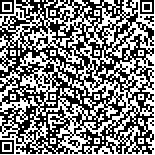| Quote
: |
唐丽亚,瞿启睿,吴霞,龙轶映,许明,张泓,刘琼,艾坤,周璐.T10脊髓损伤后T10~L2脊髓组织中差异表达蛋白的生物信息学分析[J].湖南中医药大学学报英文版,2022,42(8):1289-1299.[Click to copy
] |
|
| |
|
|
| This paper
:Browser 1374times Download 910times |
| T10脊髓损伤后T10~L2脊髓组织中差异表达蛋白的生物信息学分析 |
| 唐丽亚,瞿启睿,吴霞,龙轶映,许明,张泓,刘琼,艾坤,周璐 |
| (湖南中医药大学, 湖南 长沙 410208;长沙医学院, 湖南 长沙 410219;郴州市第一人民医院, 湖南 郴州 423000) |
| 摘要: |
| 目的 利用TMT标记定量蛋白质组学技术筛选出T10脊髓损伤后T10~L2脊髓组织的差异表达蛋白(differentially expressed proteins,DEPs)并对其进行生物信息学分析,以期挖掘出T10脊髓损伤后膀胱颈功能障碍(bladder neck dysfunction,BND)的潜在治疗靶点。方法 40只大鼠采用随机数字表法分为假手术组(12只)和造模组(28)只,造模组28只大鼠采用Hassan Shaker脊髓横断法制备T10脊髓损伤模型,从符合要求的模型大鼠中随机抽取12只作为模型组。所有大鼠行尿流动力学检测和HE染色,采用TMT检测出T10~L2脊髓组织中表达的蛋白质,将差异倍数(fold change,FC)>1.2或<1/1.2、P<0.05、unique peptide≥2的蛋白质定义为DEPs,使用KOBAS 3.0对DEPs进行京都基因与基因组百科全书(Kyoto encyclopedia of genes and genomes,KEGG)通路富集分析。利用STRING及Cytoscape软件构建蛋白质-蛋白质相互作用(protein-protein interaction,PPI)网络,利用cytoHubba插件及DEPs的度(Degree)值筛选出排名前35位的关键DEPs,并通过GluGO插件对35个关键DEPs所参与的生物过程进行分析。结果 与假手术组相比,模型组大鼠漏尿点压力和最大膀胱容量明显增大(P<0.01);HE染色结果显示,模型组膀胱颈组织中出现炎细胞浸润,平滑肌壁增厚;模型组T10~L2脊髓组织出现神经元崩解,坏死后空洞形成,神经胶质细胞增生。TMT结果显示,在T10~L2脊髓组织中共筛选出了151个DEPs,其中84个蛋白上调、67个蛋白下调;KEGG分析发现151个DEPs,主要参与趋化因子信号通路、NOD-样受体信号通路、细胞坏死、细胞凋亡、多巴胺能神经突触和谷氨酸能突触等16条信号通路。35个关键DEPs主要参与了巨噬细胞活化、神经胶质细胞的激活、小胶质细胞的激活和神经炎症反应等生物过程。结论 T10脊髓损伤后,T10~L2脊髓组织中C1qa、Clu、Snca、Pycard、Glul、Capn1、Ctsz和Ctsd可能是降低脊髓继发性损伤风险的潜在治疗靶点;T10~L2脊髓组织中多巴胺能突触和谷氨酸能突触信号途径可能成为治疗T10脊髓损伤后BND的新方向。 |
| 关键词: 脊髓损伤 T10~L2脊髓组织 膀胱颈功能障碍 TMT标记定量蛋白质组学 生物信息学 差异表达蛋白 多巴胺能突触 谷氨酸能突触 |
| DOI:10.3969/j.issn.1674-070X.2022.08.011 |
| Received:May 30, 2022 |
| 基金项目:国家自然科学基金面上项目(81874510);湖南省自然科学基金项目(2022JJ30036,2022JJ40312,2022JJ40301);湖南省教育厅一般项目(20C1432);湖南省教育厅科学研究青年项目(21B0369)。 |
|
| Bioinformatics analysis of differentially expressed proteins in T10-L2 spinal cord tissue after T10 spinal cord injury |
| TANG Liya,QU Qirui,WU Xia,LONG Yiying,XU Ming,ZHANG Hong,LIU Qiong,AI Kun,ZHOU Lu |
| (Hunan University of Chinese Medicine, Changsha, Hunan 410208, China;Changsha Medical College, Changsha, Hunan 410219, China;Chenzhou First People's Hospital, Chenzhou, Hunan 423000, China) |
| Abstract: |
| Objective Differentially expressed proteins (DEPs) in T10-L2 spinal cord tissue after spinal cord injury were screened by TMT labeled quantitative proteomics technique and bioinformatic analysis was performed on them, to discover potential therapeutic targets for bladder neck dysfunction (BND) after SCI. Methods Forty rats were randomly divided into sham operation group (n=12) and model group (n=28) by random number table method. In the model group, 28 rats were used to prepare T10 spinal cord injury model by Hassan Shaker spinal cord transection method, then 12 model rats were randomly selected from the rats meeting the requirements of the model as the model group. All rats underwent urodynamics detection and HE staining. The proteins expressed in T10-L2 spinal cord were detected by TMT. DEPs were defined as proteins with fold change (FC) >1.2 or <1/1.2, P<0.05 and unique peptide ≥ 2. The DEPs were subjected to Kyoto encyclopedia of genes and genomes (KEGG) pathway enrichment analysis using KOBAS3.0. The protein-protein interaction (PPI) network was constructed using the STRING and Cytoscape software. The cytoHubba plug-in and the Degree value of DEPs were used to screen the top 35 key DEPs, and the biological processes involved in the 35 key DEPs were analyzed by GluGO plug-in. Results Compared with the sham operation group, the leak point pressure and maximum cystometric volume in the model group were significantly higher (P<0.01). HE staining showed that infiltration of inflammatory cells and thickening of smooth muscle were occurred in bladder neck of the model group. Neuronal disintegration cavity formation after necrosis, and proliferation of glial cells were appeared in T10-L2 spinal cord of model group. The TMT results showed that, 151 DEPs were screened in T10-L2 spinal cord, where 84 DEPs were up-regulated and 63 were down regulated. KEGG analysis found that 151 DEPs were mainly involved in 16 signaling pathways including chemokine signaling pathway, NOD-like receptor signaling pathway, necroptosis, apoptosis, dopaminergic synapse, glutamatergic synapse and etc. The 35 DEPs were mainly involved in biological processes such as macrophage activation, glial cell activation, microglia activation, neuroinflammatory response. Conslusion After T10 spinal cord injury, C1qa, Clu, Snca, Pycard, Glul, Capn1, Ctsz and Ctsd may be potential therapeutic targets to reduce the risk of secondary spinal cord injury. Dopaminergic synapse and glutamatergic synapse signaling pathway in spinal cord tissue may become new directions for the treatment of BND after T10 SCI. |
| Key words: spinal cord injury T10-L2 spinal cord tissue bladder neck dysfunction TMT labeled quantitative proteomics bioinformatics differentially expressed protein dopaminergic synapse glutamatergic synapse |
|

二维码(扫一下试试看!) |
|
|
|
|


